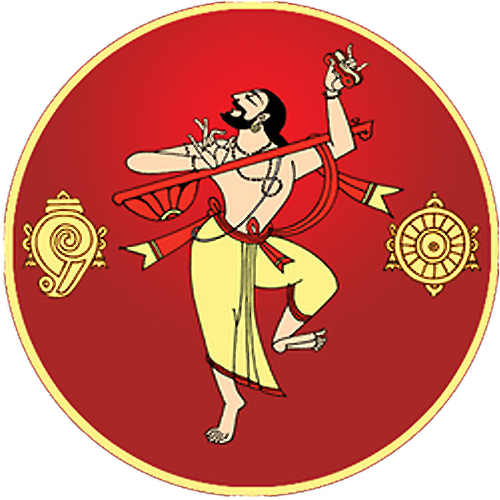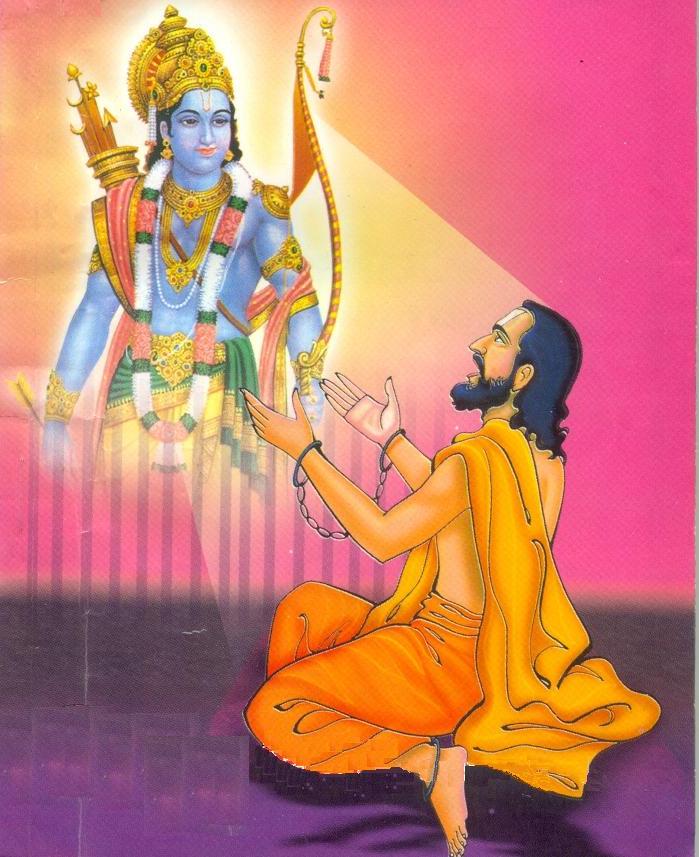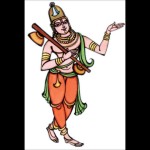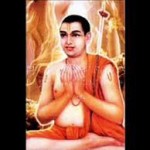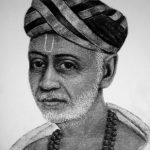Continuing our series on great Andhra personalities, our spotlight this week is on Bhadrachalam Ramadasu.
The name Ramadasu is synonymous with the town of Bhadrachalam. Given the contentious battle over this pilgrimage site between Telangana and Seemandhra, ACP thought this might be the ideal time to cover both the Saint and his town.
Background
Born Kancherla Gopanna (1620 – 1680 CE), Ramadasu’s parents, Linganna and Kamaamba raised him in the village of Kompella in the Warangal district of the Telangana region. He married a woman named Kamalamma and later moved to the village of Nelakondapalli.
In a literal case of nepotism, Gopanna’s uncles. Akkanna and Madanna, introduced him at the court of the Golkonda Sultan, Tanashah, who was impressed by him. Ramadas was offered a position as Tehsildar at Bhadrachalam, where he performed his duties as a state official in an exemplary manner. So exquisite was his performance that the local treasury was soon flush with funds.
His intense bhakti for Sri Rama soon led him to be concerned about the decaying state of the temple of Bhadrachalam. He allocated some monies from the treasury to renovate it. He later supplemented this offering by sponsoring the Kumbhabhishekham. However, all this unauthorized expenditure soon depleted the local treasury, leading Tanashah to imprison Gopanna. He was jailed and tortured for 12 years–a fate that was to continue until the entire sum was paid back to the state.
Bhakti for Lord Rama
Tanashah went to inquire about Gopanna’s condition after some time, and was livid with rage when he found out that the latter’s faith in Sri Rama was unshaken and Ramadasu was himself blissfully singing Rama’s praises despite his circumstances. Furious, the Golkonda Sultan ordered that Gopanna be whipped daily. In anguish, Gopanna appealed to Sri Rama and Sita.
It was then that Ramadasu’s famous Dasarathi Satakam, 108 stanzas to Rama, was composed. It is considered a classic to this day. Soon, his Telugu songs, which were enriched by Sanskrit, became popular all across the land.
References:
Having given a brief overview, we will let the eminent experts take over from here. Many of you may be familiar with the insightful tweets of Ratnakar Sadasyula, better known on twitter as “ScorpiusMaximus“. We are excited to announce he will be formally joining our growing team here at Andhra Cultural Portal. In the mean time, below is a sample of his already prolific body of work.
The following post is published courtesy of Ratnakar Sadasyula garu, who graciously gave permission to reprint his informative peace on Bhadrachalam and Ramdas. The full article can also be found here on his personal blog. You can also follow him and participate on his wonderful web initiative: Rebuild Andhra.
___________________________________________________________________________
BLOG POST RE-PUBLISHED FROM: MIRROR TO INDIA
After Lord Venkateswara, the next most popular God in Andhra Pradesh would have to be Lord Ram himself. The Ramalayas or the Ram temples are pretty much a common sight in almost every village in Andhra Pradesh. The chariot processions or the Ratha Yathra during the Ram Navami celebrations again a very common occurence, in fact it is one of the most widely celebrated festivals in rural Andhra. Among all the Ram temples down South, the most famous one though would be the Seetharamy Swamy temple at Bhadrachalam. And when one speaks of Bhadrachalam, the name that comes to mind immediately would of course be that of Bhakta Ramadasu aka Kancherla Gopanna.
The history of Bhadrachalam, it’s rise as a major pilgrimage center, is interwoven with the life of Ramadasu himself, much as Anammayya’s life story was intertwined with that of Tirupati. The unique feature of Bhadrachalam temple, though is that a major part of the construction was financed and carried out by Ramadasu himself, who was a mere Tahsildar. Also the temple regularly received grants and gifts from both the Qutub Shahis and later the Asaf Jahis( the Nizams) of Hyderabad state, a practice that to date is continued by the State Government of Andhra Pradesh.
As per legend, Bhadrachalam, gets it’s name from the story of a sage named Bhadra, the son of Menaka and Mount Meru, an ardent devotee of Lord Rama, doing penance on the banks of the Godavari. The sage desired for the vision of Lord Ram, and when he appeared, implored him to be seated on his head. The Lord however in search of Sita, promised that he would do so as soon he finds her, and comes back. As the penance of Bhadra grew more stringent, Lord Vishnu himself appeared as Vykuntha Rama in front of Bhadra, with Sita seated on his thigh, and Laxman to his left. Bhadra being the son of Mount Meru, seated Lord Ram, Sita and Laxmana on his head, which was the peak of the hillock. And thus the name Bhadrachalam( Hill of Bhadra) or Bhadragiri came to the place. Bhadrachalam also has a significant part in the Ramayan, as a part of the vast Dandakaranya. It is believed to be the spot where Lord Ram spent the exile along with Sita and Laxman, at a village called Parnasala, around 30 Km from Bhadrachalam. It is also believed to be the spot where Ravan abducted Sita, and Lord Ram killed the demons Khara and Dhushana, after a fierce battle at another village called Dummagudem close by.
Idigo Bhadradri, Gautami adigo chudandi.
Mudamato Seeta, mudita Lakshmanulu kalisi Raghupati Yundedi.
One of Ramadasu’s famous Kirtanas extolling the beauty of Bhadrachalam, asking the people to see the beauty of both Bhadradri and Gautami( another name for the river Godavari), with Seeta on his thigh, and Lakshmana to his side, does Raghupati reside here. The idol of Lord Rama is in a Chaturbhuja form, with the bow and arrows in front, and the Shanka Chakra in the rear right and left hands respectively. The idol faces west towards the Godavari river and is seated in a padmasana pose. The idols were later found by Pokala Dhammaka, tribal woman, who was an ardent devotee of Lord Ram. It is believed that the Lord himself, revealed the location of the idols to Dhamakka, and also predicted that one of his devotees would build a huge temple.
That devotee happened to be on Kancharla Gopanna, who would later become famous as Bhadrachala Ramadasu( not to be confused with Samartha Ramadas, in Maharashtra). Gopanna was born in the remote village of Nelakondapalli located in present day Khammam district, to a pious Brahmin couple, Linganna Murthy and Kamamba. His maternal uncles, Akkanna and Madanna, both working in the court of Tana Shah, the then ruling Golkonda Sultan, in very high positions. Madanna being the treasurer of the Golkonda sultanate, ensured employment for Gopanna as a Tahsildar for the Palvancha. Tana Shah, the last of the Golkonda Sultans, had a tolerant policy towards the Hindus, appointing some of them in high positions. Both Akkana and Madanna rose to prominence during Tana Shah’s reign, the latter wielding considerable influence.
In his capacity as the Tahsildar, Gopanna happened to visit Bhadrachalam once during a village fair( Jatara), which is where he chanced upon the now dilapidated temple. It was then that Gopanna appealed to the villagers to donate liberally for the construction of the temple. In spite of the best efforts, he was still short of money, forcing him to use part of the tax revenues for the construction of the temple. Tana Shah, furious at this incident, imprisoned Ramadasu in the Golkonda fort prison, where he was tortured daily.
Pain and foolishness lead to great bliss and complete knowledge, for Eternal Wisdom created nothing under the sun in vain.- Kahlil Gibran
The 12 long years of imprisonment in the Golkonda fort, was a period of endless suffering for Ramadasu, now so named after his devotion to Lord Rama. Day after day, Ramadasu, sang to the Lord to rescue him from his misery. At times yearning, at times downright critical, at times imploring, the pain and agony of Ramadasu, manifested itself through the Keertanas. A vast majority of Ramadasu keertana’s written in prison,centered around his call to Lord Rama. While it is not possible for me to explore each and every keertana, I am just having a look at some of the more well known ones. One of the most famous being “Paluke Bangaramayena”.
Paluke Bangaramayena, Kodandapani,paluke Bangaramaye, pilachina palukavemi, kalalo ne naama smarana marava, chakkani tandri.
Here Ramadasu imploring Lord Rama -” Has your voice become as rare as Gold, Oh Kondandapani( one of the names of Lord Ram), Why do you not speak to me, even when I call you, and I hath not forsaken your name even in my dreams, my Father”.
Enta vegina gani, suntaina daya raadu, pantamu seya, nenentativadanu tandri, Saranagatatrana biruduamkitavud gada, karuninchu Bhadrachala vara Rama Poshaka.
You show no mercy inspite of my repeated pleas,O Lord,who am I for you to be so adamant with me. Here Ramadasu is literally humbling himself before the God, requesting him not to be so adamant , listen to his pleas. You Oh Lord, who bears the title of the One who grants Refuge( Saranagatatrana), have mercy Oh protector of Bhadrachala Rama.
Another beautiful Keertana of Ramadasu is “Nannu Brovamani Cheppave, Seetamma Talli”, where he implores Mother Seeta( Seetamma Thalli) to request Lord Ram to rescue him from his misery.
Another keertana, one which to date remains one of the most popular in the Telugu literature is “Ee teeruga nanu daya chuchedavo, ina vamsotama Rama, na tarama Bhava sagarameedanu, nalina dalekshana Rama”. Here Ramadasu requesting Lord Ram to help him cross the Bhava Sagarama( literally the Ocean of the worldly life, a metaphor for eternal salvation. “Rama, whichever shore I am on, show thy mercy on me, Oh noble soul of Ina Dynasty, it is not in me alone to swim across the ocean of the worldly life:” At one stage Ramadasu, even implores Lord Rama to overlook his Karma or any mistakes he had committed, “Krura karmamulu neraka chesithini,neramulenchaku rama, daridramu pariharamu seyave,Daiva sikhamani Rama”. “Oh Lord, out of ignorance I had comitted the mistakes in life, do not seek the crimes I had done Rama, and lead me out of this misery”. I think here it was due to the tale, about Ramadasu having to suffer the long imprisonment and torture for some of the misdeeds he had committed in past life.
Finally, the tale of Lord Ram and Lakshman, appearing as youngsters in front of Tana Shah, and paying him the amount, is well known, that resulted in Ramadasu’s release from captivity. Tana Shah realizing the greatness of Ramadasu, donated the entire money to the Bhadrachalam Temple, for it’s maintenance and upkeep. Tana Shah also started the practice of donating the Mutyala Talambralu( pearls) every year for the Sri Rama Kalyanotsavam, which was continued by the Nizams too later on. Even now the State Govt of Andhra Pradesh, still follows the practice of gifting the pearls every RamNavami for the Kalyanotsava.
Other worthwhile places near Bhadrachalam apart from the temple, is the village of Parnasala around 30 Km from the place, where Lord Ram was believed to have spent time in exile, there is a model of the hermitage here. If one is desirous of visiting the Bhadrachalam temple, the best way would be to take the launch ride from Rajahmundry to Bhadrachalam, along the Godavari. The scenic ride, offers beautiful vistas of the Godavari river, as it cuts through dense forests, hills, riverside villages, gorges, making the journey a memorable experience. While the architecture of the temple is not as grand as some of the other temples down South, it is neverthless worth a visit, for the scenic backdrop of the Godavari river, and the thickly forested surroundings.
